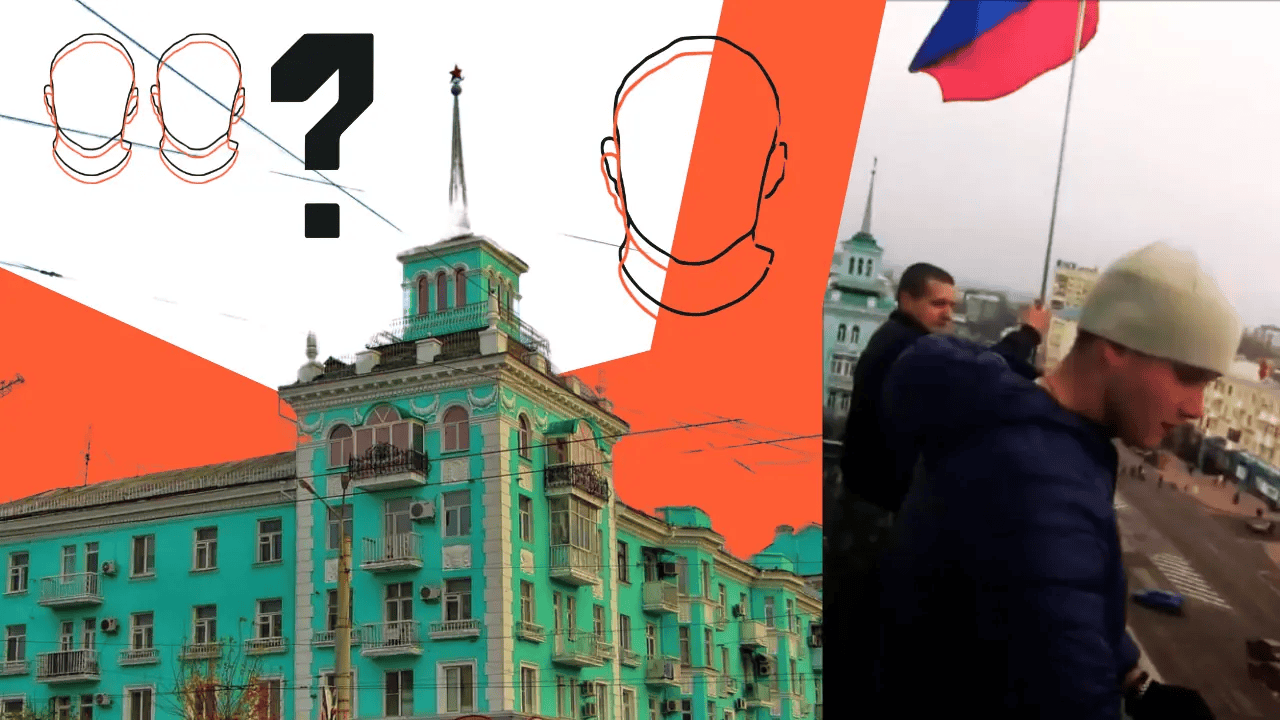

Journalists identified Russians who hung the Russian flag in Luhansk in March 2014
“Farvater.Skhid” has identified two Russians who hung the Russian tricolour in Luhansk in March 2014. The journalists used artificial intelligence tools that were not available ten years ago. A search using screenshots from the video even helped to find the passport details of these participants of the “Russian spring”. Read on to discover how they were found and why this is important ten years later.
Disguising Russia’s aggression as an expression of the will of the Ukrainian people remains one of the most important elements of Russia’s strategy to legitimise its actions. For this purpose, pseudo-elections and pseudo-referendums are held with a predetermined outcome, and Russian troops are turned into tourists, holidaymakers or even local “miners and tractor drivers” in the light of propaganda.
One of the first staged performances in the Luhansk region that led to a significant escalation of the situation was the installation of Russian flags on buildings in March 2014. However, the actors in this production were residents of neighbouring Russian regions.
What to look for to find a “Russo touristo”
On 4 March 2014, leading Ukrainian media outlets reported, citing a video from social media, that armed youths had hung the Russian flag in Luhansk. The Farvater.Skhid journalists found the full version of the video of good quality on the Informator’s YouTube channel. Let’s take a closer look at what we see in the video.
Detail 1. Five people are involved in the installation of the flag on a high-rise building in the Luhansk city centre: a cameraman and four performers. Here they are in the screenshots (for the convenience of further description, let’s provide them with operational encryption):
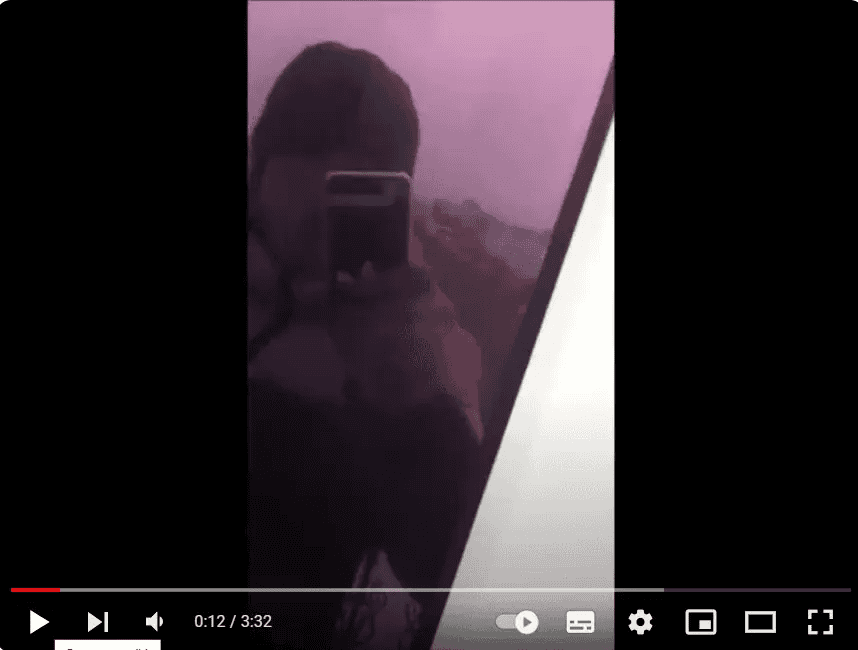
№1 “Cameraman”
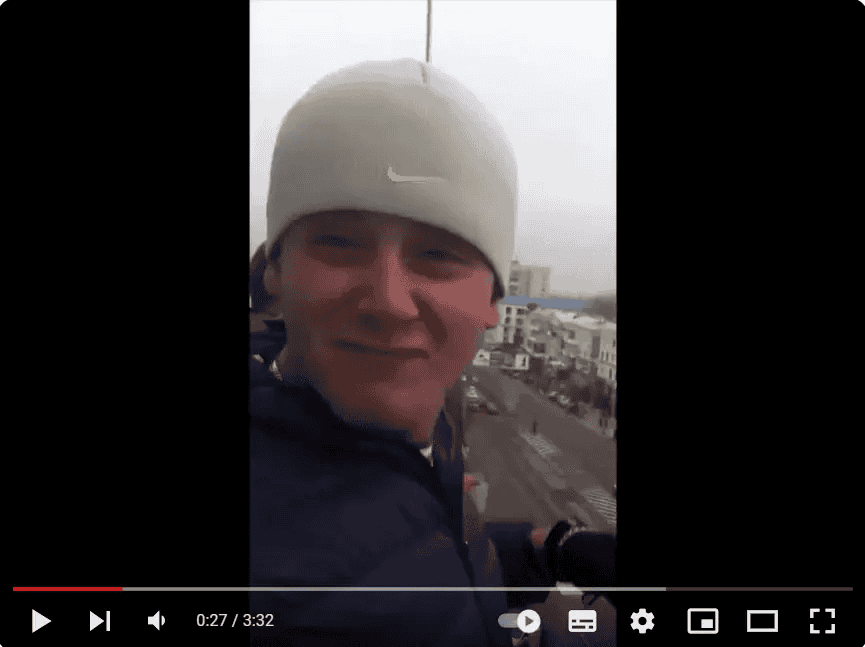
№2 “Nike”
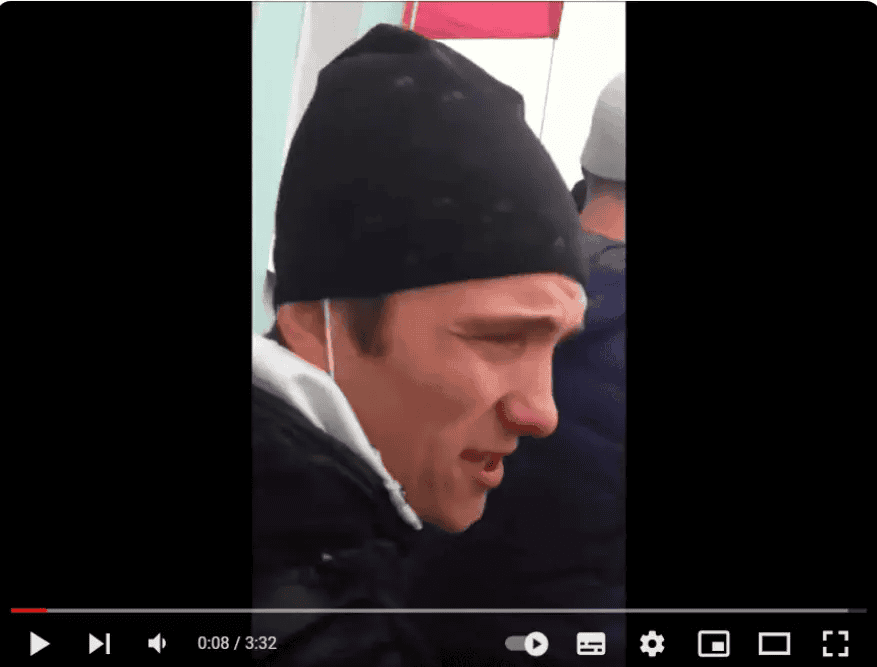
№3 “Low Profile”
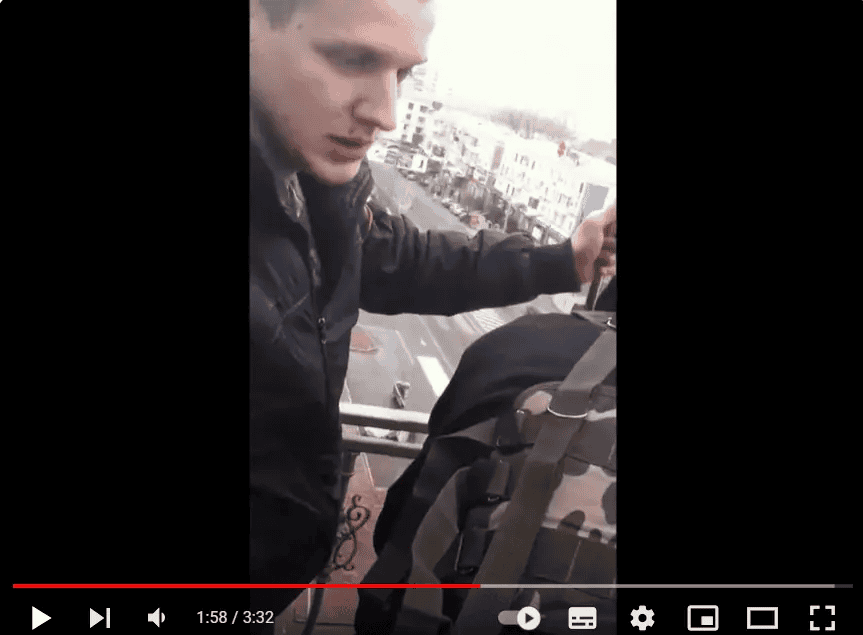
№4 “Birthmark”
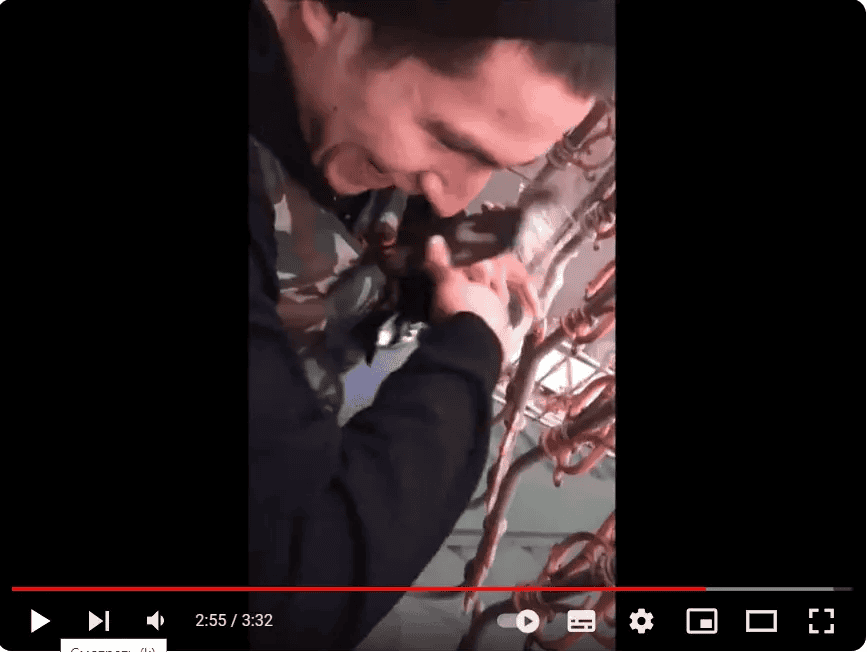
№5 “Revolver”
Detail 2. Out of the entire group, two people stand out for their distinctive Russian accents. These are “Cameraman” and “Nike”. “Cameraman” behaves like a senior: “Don’t whistle”, “wrap it up, guys, let’s work!”
Detail 3. When addressing “Nike”, the “Cameraman” calls him “Vanyok”. Instead, “Nike”, in his address to the audience, says: “Belik and I are in Luhansk, in Ukraine, we came to the Maidan to defend the Ukrainian people…”. This indicates that there are indeed two Russians and the name of the “Cameraman” may have the same root as “Belik”.
Detail 4. “Revolver” is Herman Prokopiv (real name at birth – Lee Van Chol), a well-known participant in pro-Russian rallies in Luhansk. Even the video of the incident is titled on the Informator’s YouTube channel as “Herman Prokopiv hangs a Russian flag with Russian instigators”. At the time of the events, he was a citizen of Ukraine known as one of the leaders of the pro-Russian movement Luhansk Guard.
“Birthmark” is his friend with a distinctive mole above his upper lip, also from Luhansk. Their common photos can be found long before the events, during the celebration of the Airborne Troops Day. His Vkontakte page is registered under the name Stas Fedyuk, and its content (including the photo) shows that this man is indeed from Luhansk.
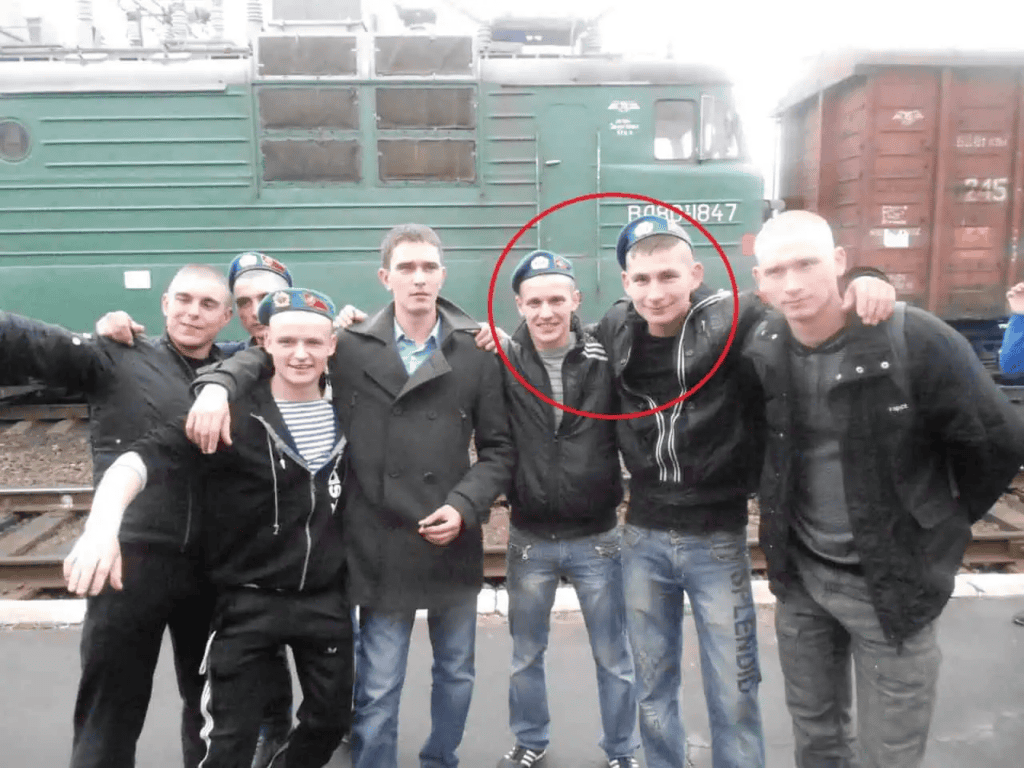
Herman Prokopiv and “Birthmark” Fedyuk long before the events of 2014. Photo: Vkontakte/Herman Prokopiv
The bottom line is that in the group of instigators, we have two probable Russian citizens. These are “Cameraman” Belik and “Nike” Ivan. However, we only have a photo of “Nike”, so we will try to start with him.
The Rossoshan origin of the Luhansk flag bearers
All the facial recognition programmes used by the Farvater.Skhid journalists accomplished the task of finding “Nike” Ivan perfectly. Our wanted man is Ivan Syrovatsky, a 29-year-old native of the town of Rossosh, Voronezh region of Russia (according to his social media pages in Odnoklassniki and Vkontakte).
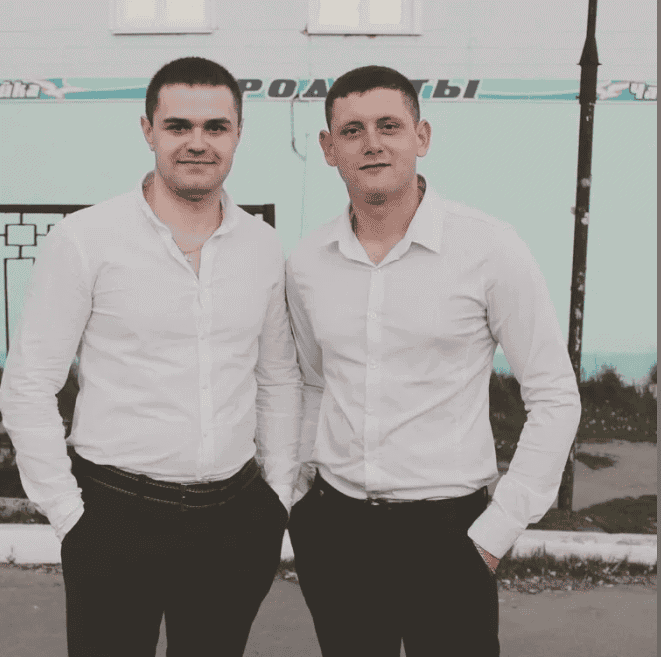
“Nike” Syrovatsky is on the right
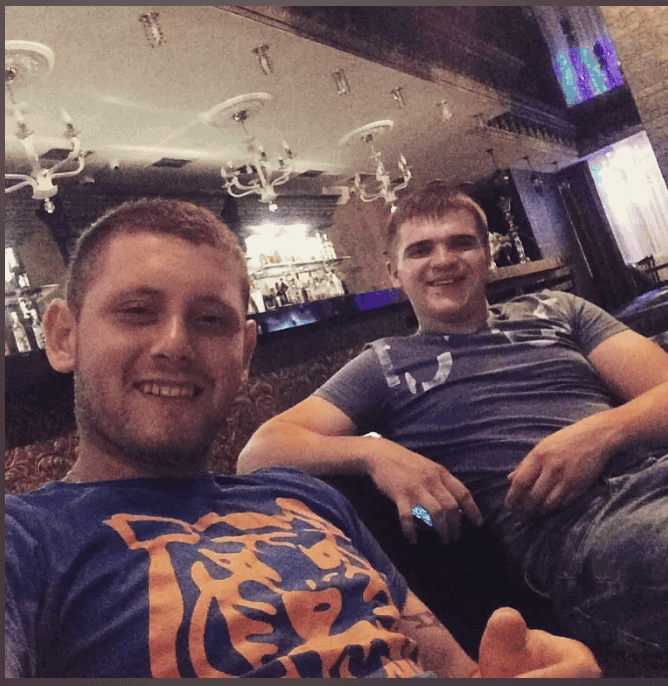
“Nike” Sirovatsky is on the left
According to his wife’s information (Vkontakte, Instagram), he is currently the father of three children and looks like this:
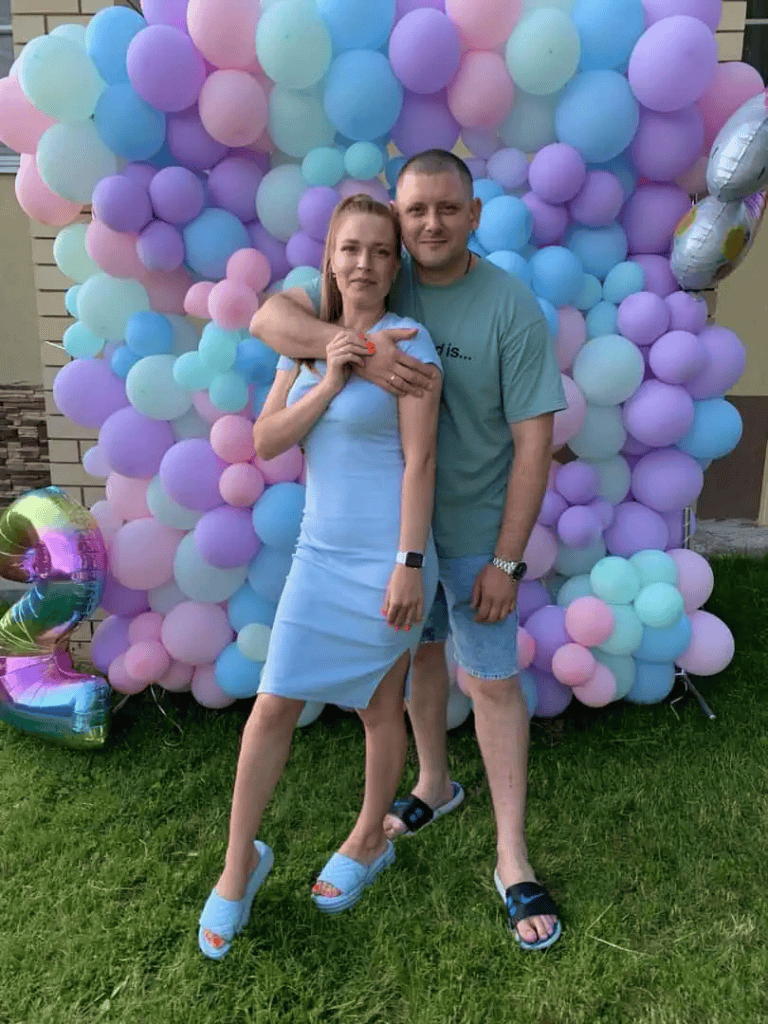
Ivan Syrovatsky remains loyal to Nike, as we can see from his slippers
Thanks to the data from social networks, the Farvater.Skhid journalists managed to establish his full personal details, including his passport data. This is Ivan Romanovich Syrovatsky, born on 01.11.1994, a native of the town of Rossosh, Voronezh region, currently living in Voronezh.
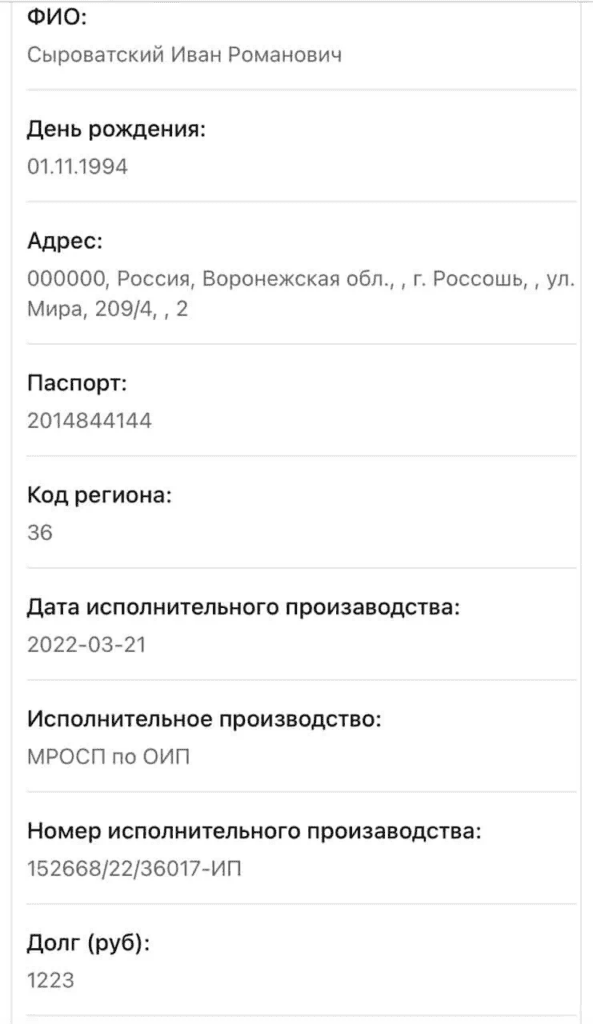
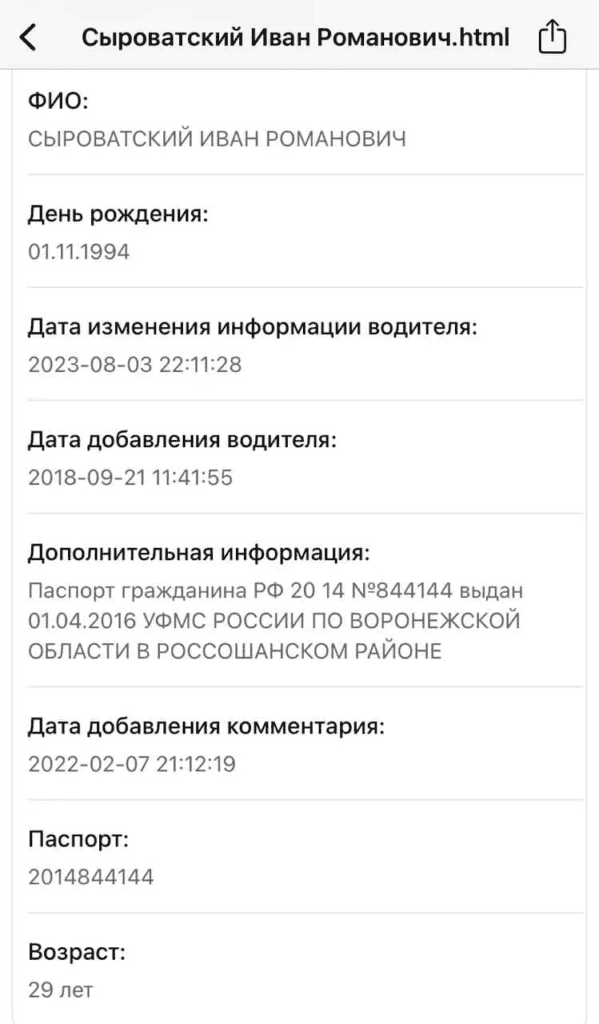
The Farvater.Skhid journalists managed to find Ivan Syrovatsky’s data quite quickly
Later, the investigation stalled. However, the search agent provided the Farvater.Skhid journalists with another link to an inactive account called “Ivan Mestnyi” (“Ivan the Local”), which did not catch the journalists’ attention at first. Until the clothes and phone of the person next to Ivan Syrovatsky caught the eye.
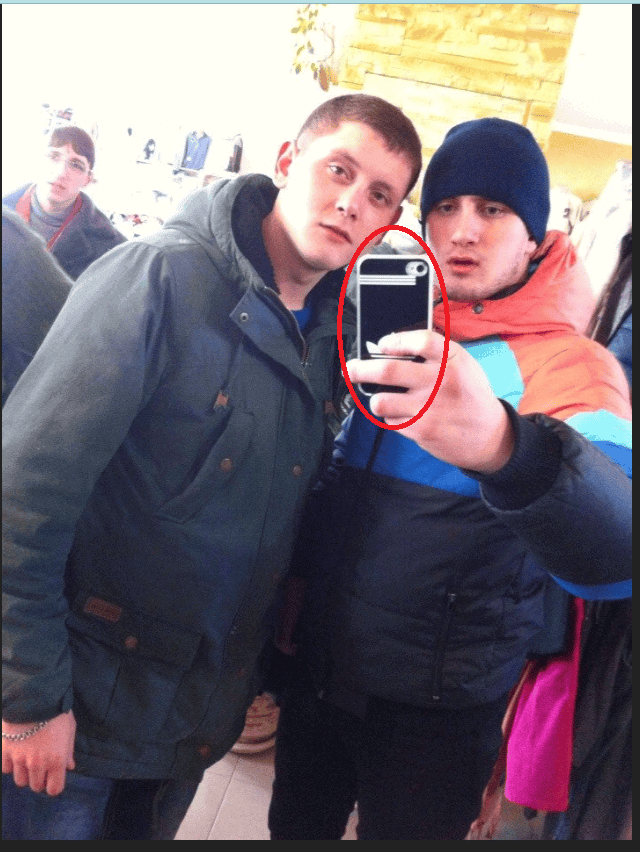
Photo from Ivan Mestnyi’s Vkontakte page
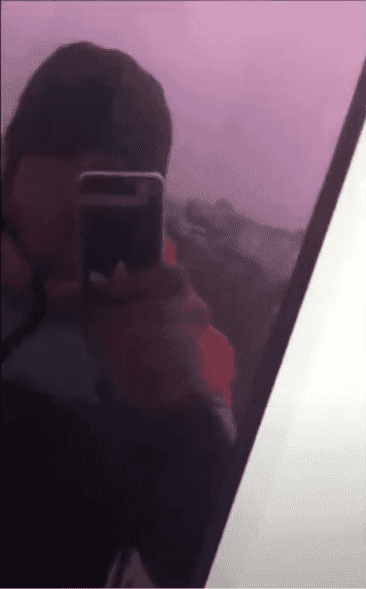
Screenshot from the video of the tricolour hanging
The distinctive jacket and the phone with the Adidas case matched exactly what we saw on the “Cameraman” in the video of the flag hanging. And with a high probability, we got a photo of his face. Moreover, according to the geolocation data, the guys were in the centre of Luhansk, and it was March 2014.
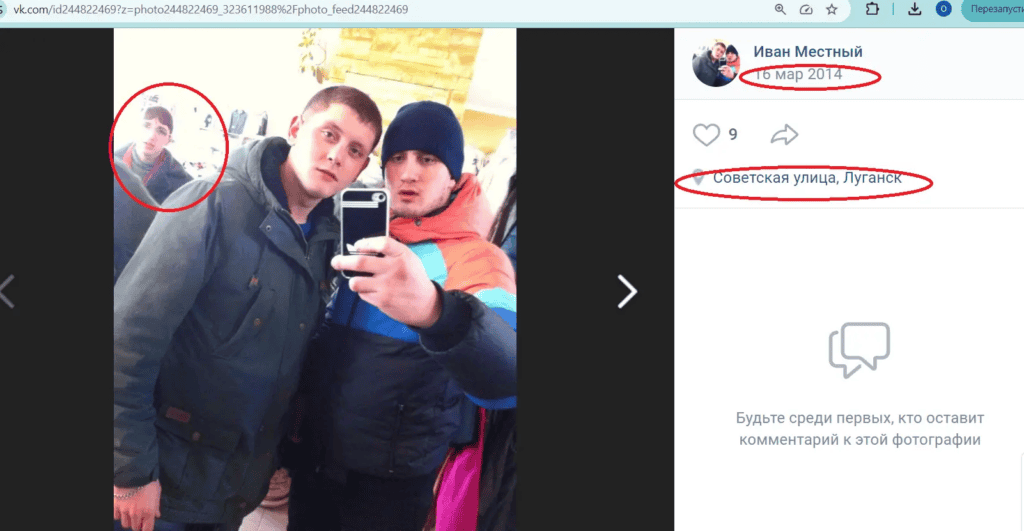
The photo was published in March 2014, the clothes and the design of the phone case match, and the geotag is the centre of Luhansk. Screenshot
In addition, in the upper left corner, we see the face that has already been recorded on the Vkontakte page of the fifth person involved in the video, “Revolver” German Prokopiv, in photos from pro-Russian rallies in Luhansk.
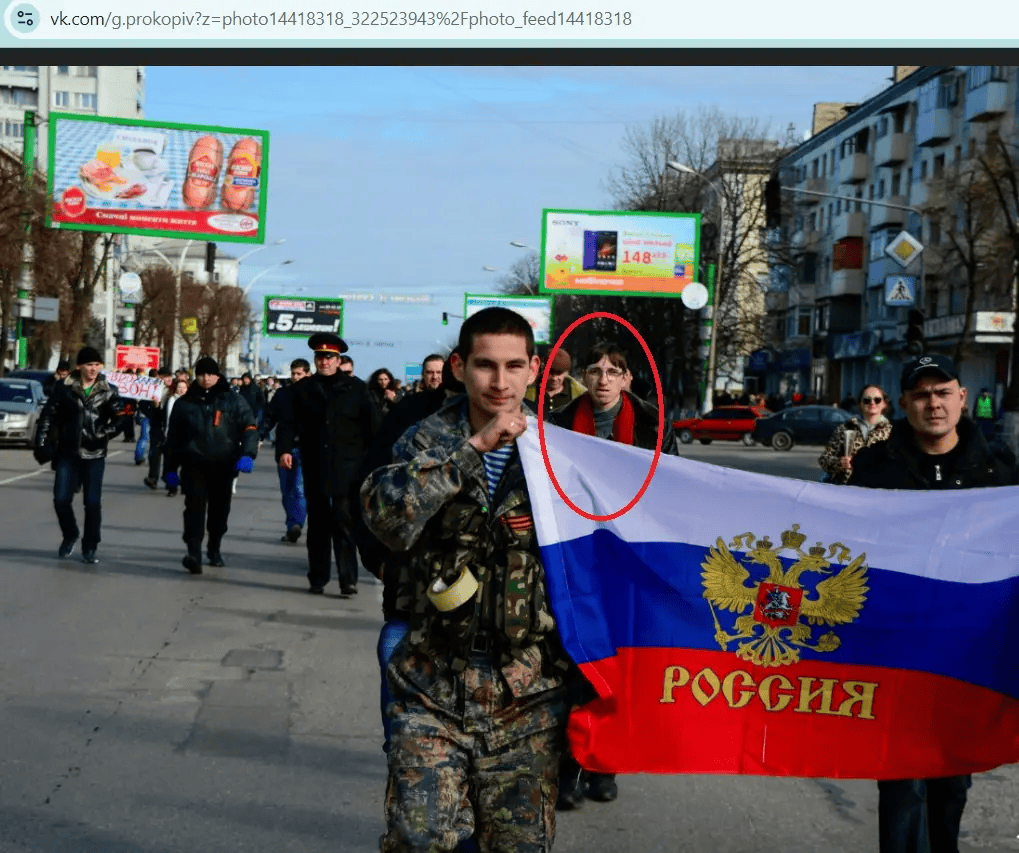
The guy in the previous photo took part in the events of the “Russian Spring”. Screenshot
The secretive “Cameraman”
Having the photo of the “Cameraman”, the Farvater.Skhid journalists tried to find him on the Internet. The search yielded a large number of photos from the pages of friends and classmates. First of all, the journalists noticed a photo of him and “Nike” on holiday together back in 2012.
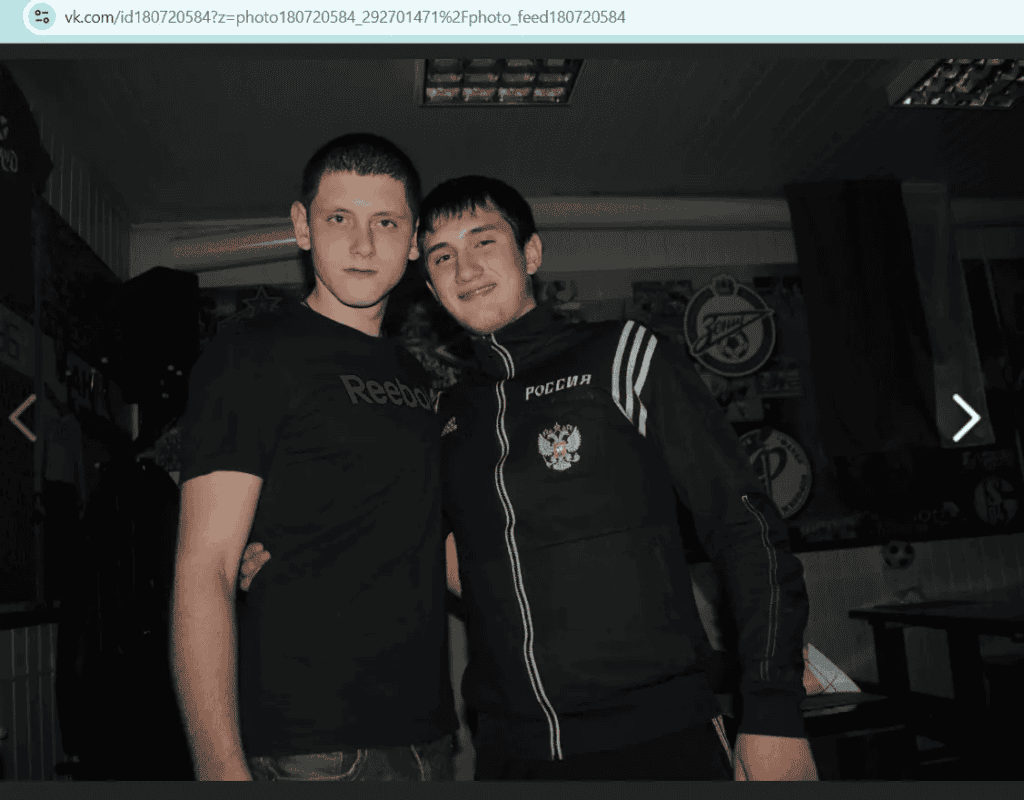
“Nike” Syrovatsky (left) and “Cameraman” were friends at least as far back as 2012. Screenshot
This indicates a long-standing acquaintance and that the “Cameraman” should also be found somewhere in the Voronezh region. However, Farvater.Skhid could not find any information about the real name of the person in the photo. A study of his circle of contacts, including a sambo coach Aleksey Alekseev, helped shed light on his identity.
On Alekseev’s Instagram page, the Farvater.Skhid journalists found many photos of him and the “Cameraman” together. One of them shows them competing in strength exercises. Alekseev comments on his victory, and his opponent, the “Cameraman”, replies that he will win next time.
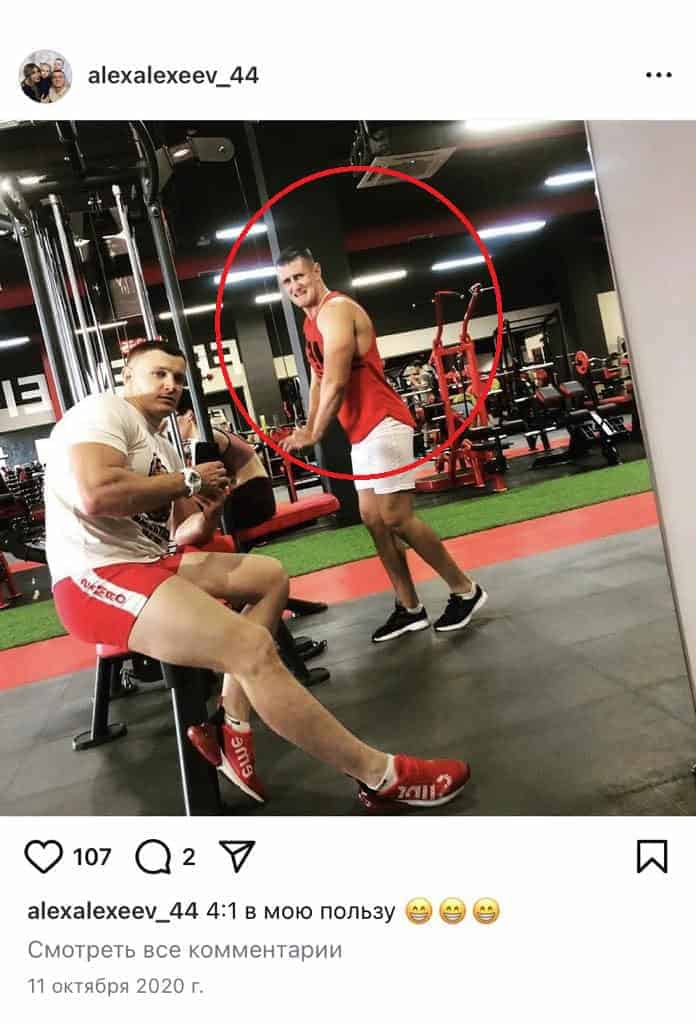
The “Cameraman’s” friend reports his victory. Screenshot
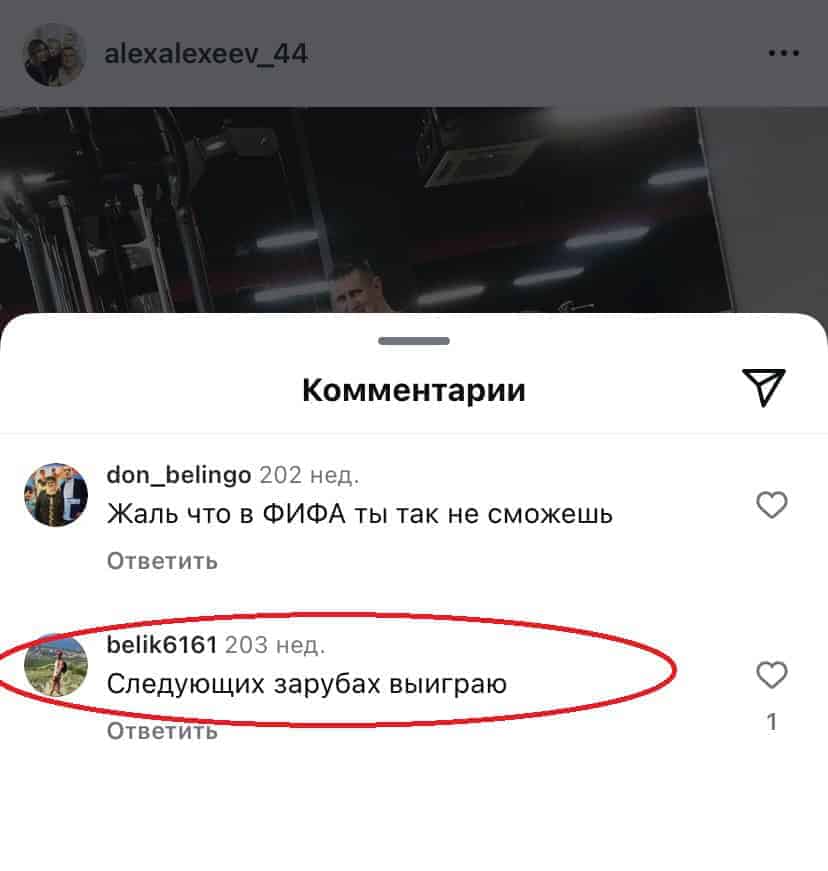
The “Cameraman” replies that he will win next time. Screenshot
And he does it from the account with ID “belik6161”. Here we recall that “Nike” called “Cameraman” Belik during the hanging of the tricolour in Luhansk.
The account itself is signed as “Sergei Kalinin” and contains a photo of the “Cameraman” in the mountains.
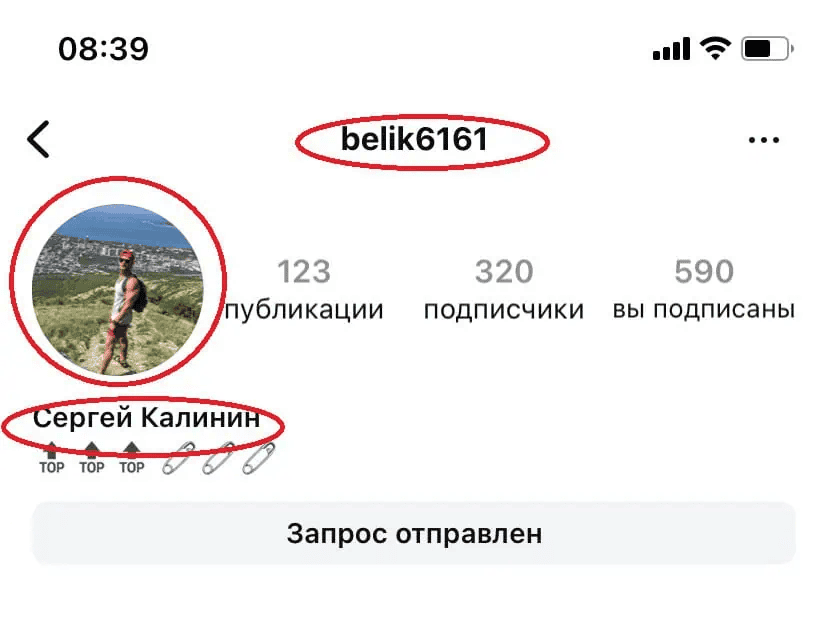
“Sergey Kalinin” is the “Belik” we were looking for. Screenshot
We return to Aleksei Alekseev’s Vkontakte page. There we find likes under shared photos from the account “Sergey Kalinin” with a similar avatar. Instead, the ID on this social network is https://vk.com/belikoff6131!
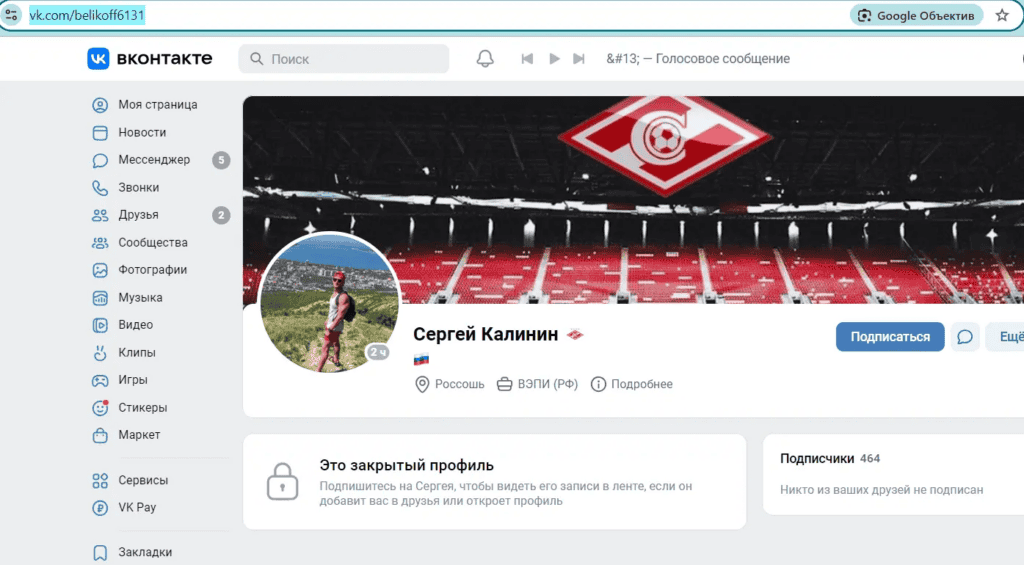
The profile of “Sergey Kalinin” on Vkontakte is closed. Screenshot
This profile also “liked” posts by Herman Prokopiv and a photo from Luhansk shared with Syrovatsky. There are no such coincidences, especially since Rossosh is listed as his hometown.
This Vkontakte account has an email address very similar to his ID, namely [email protected]. In the online databases of the Russian Alfa-Bank, it is listed as the contact email of a Russian citizen, Belikov Sergey Sergeevich, born on 30.07.1993, registered in Rossosh together with Kalinina Daria Igorevna, whose surname he used as a pseudonym.

Farvater.Skhid found his full name in the bank database using his email address
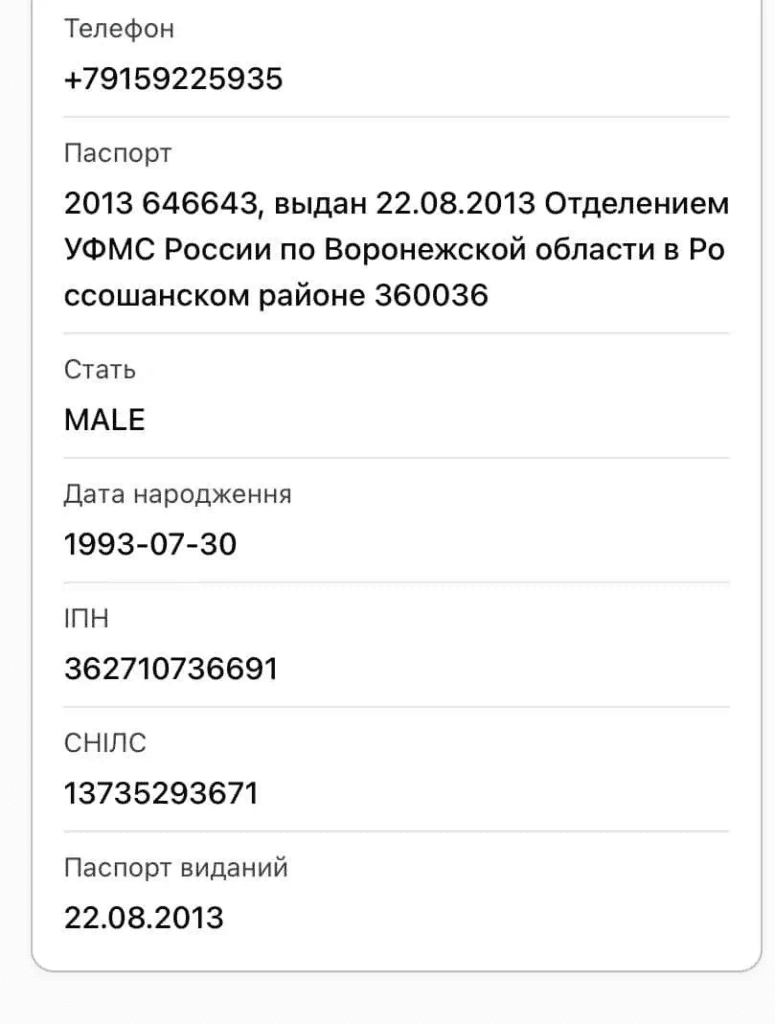
And all the other data, including passport details and SNILS
The “Luhansk business trip” with a taste of a special operation
It would seem that everything is clear. We have achieved our goal and proved that among the perpetrators of the instigation of hanging Russian flags in Luhansk were specific Russian citizens we had identified. Another hypothesis was suggested to the Farvater.Skhid journalists by a long-standing inactive Vkontakte account of Sergei Belikov, which the journalists discovered during the searches.
In this account, signed as “Senya Mestnyi” (we recall that his accomplice in the Luhansk operation Syrovatsky had an account called “Ivan Mestnyi”), we find a photo of Belikov from his service in the Russian army. They are dated August 2014.
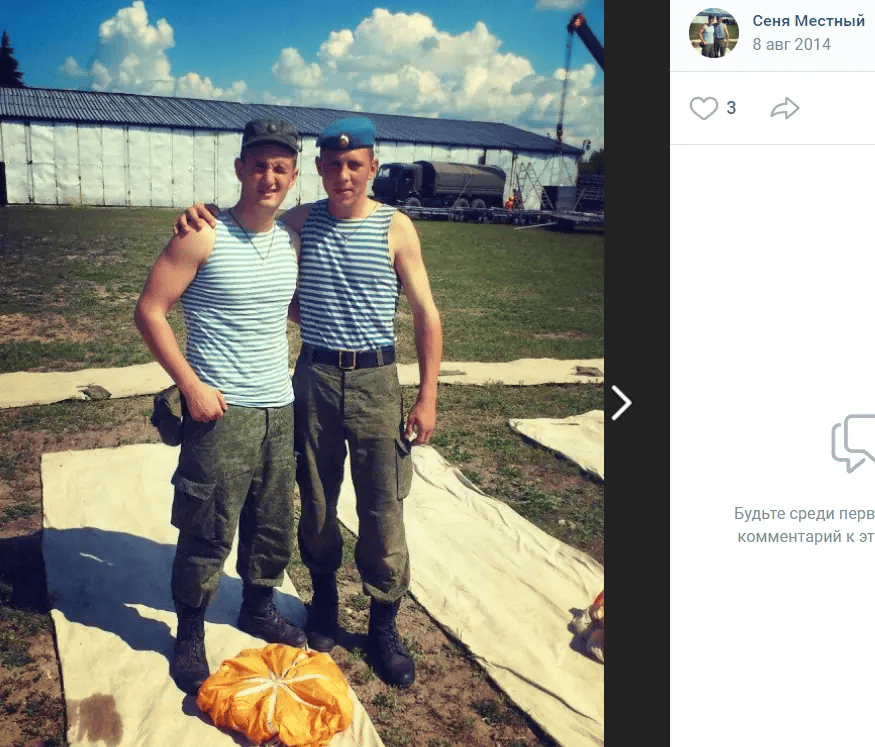
In August 2014, Sergei Belikov served in the airborne troops. Screenshot
Using the methodology we have already developed, the Farvater.Skhid journalists found Belikov’s fellow soldiers. In particular, in a group photo of their unit:
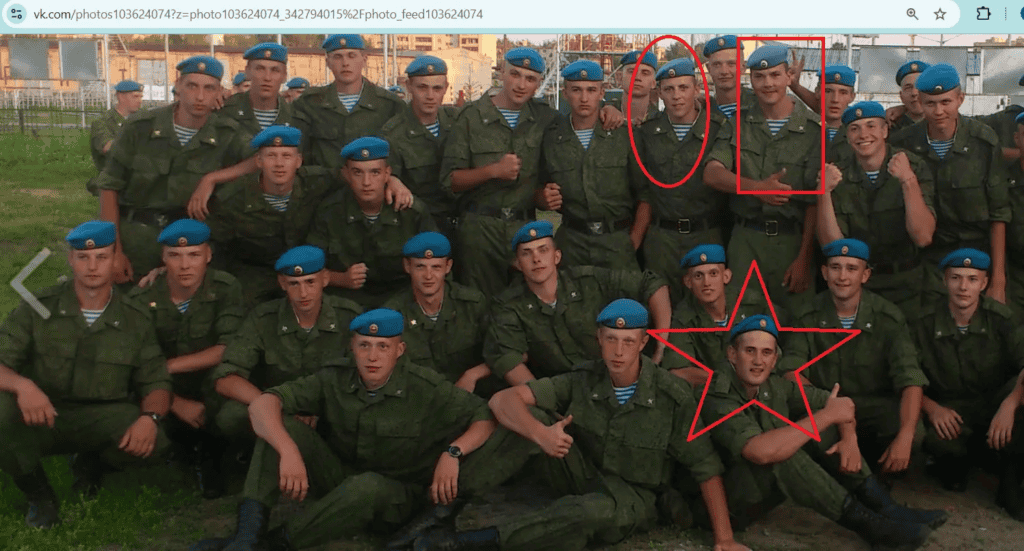
Sergei Belikov is in the asterisk, the guy from the previous photo is in the oval, and the owner of the photo, Ruslan Karetnikov, is in the rectangle
From Karetnikov’s page, we learn that he served in the 331st Guards Parachute Regiment (based in Kostroma) of the 98th Guards Airborne Division, where this photo was taken. He was called up for military service in December 2013 and discharged a year later.
Units of this particular regiment took part in the fighting near Ilovaisk in August 2014. Ten paratroopers were captured by Ukrainian troops. One of the prisoners testified that his unit was ordered to change their uniforms and paint over the insignia on their uniforms and vehicles.
The journalists hypothesised that this regiment may have been involved in the events in Ukraine long before Ilovaisk. That perhaps “Cameraman” Belikov and “Nike” Sirovatsky had been flying the Russian flag in Luhansk in March 2014 as active Russian military personnel. It took Farvater.Skhid a long time to verify. The hypothesis was not confirmed.
Indeed, Ivan Syrovatsky did serve as a paratrooper. However, he was drafted in November 2012 and discharged a year later, and served in another unit, the 137th Parachute Regiment in Ryazan. Sergei Belikov, who was a year older than him, was probably called up later than the March events in Luhansk – in the spring of 2014. After all, the photo on Belik’s Odnoklassniki page shows that he spent the autumn of 2013 and winter of 2013-2014 as a civilian, hanging out weekly in the Rossoshan café-club Dali.
Therefore, no, they were not active servicemen at the time of the “Russian spring”. On the other hand, we can now assert that the specific Russian citizens we have identified participated in the “Russian spring”. It would also be reasonable to assume that the trip to Luhansk was initiated by one of the military-patriotic clubs. After all, Sergei Belikov was involved in this movement.
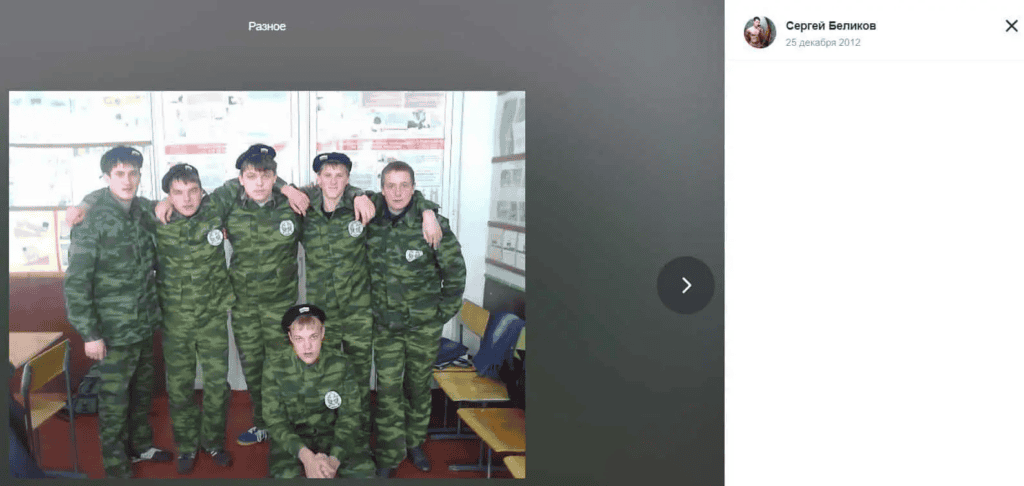
Since studying at the technical school, Sergei Belikov (far left) has been involved in the military-patriotic movement. His chevrons read “Airborne Troops. Russia”. Screenshot
This could be the end of the story, but there is something to add. Sergei Belikov likely continued to serve under contract in the 331st Parachute Regiment. This is indicated by the address of his registration in one of the Russian databases – Kostroma. Kostroma, 13, 3rd Sosnovy Proezd, which coincides with the location of the regiment (military unit 71211). One of the face recognition tools also found Belik in a photo from a parade in Moscow on May 9, 2019.
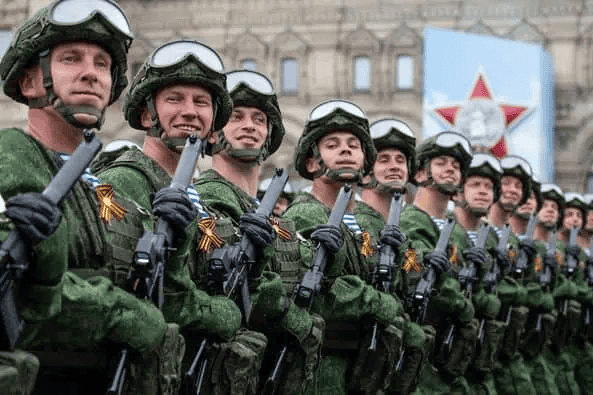
Artificial intelligence identified Sergei Belikov (fifth from the left) in this photo from the Red Square parade on May 9, 2019
All of this, together with the difficulty of finding the figurant’s real name on social media, his use of various pseudonyms, etc., may indicate Belikov’s involvement in intelligence. Especially if we take into account the joint celebration of Intelligence Day with his sambo coach Alekseev.
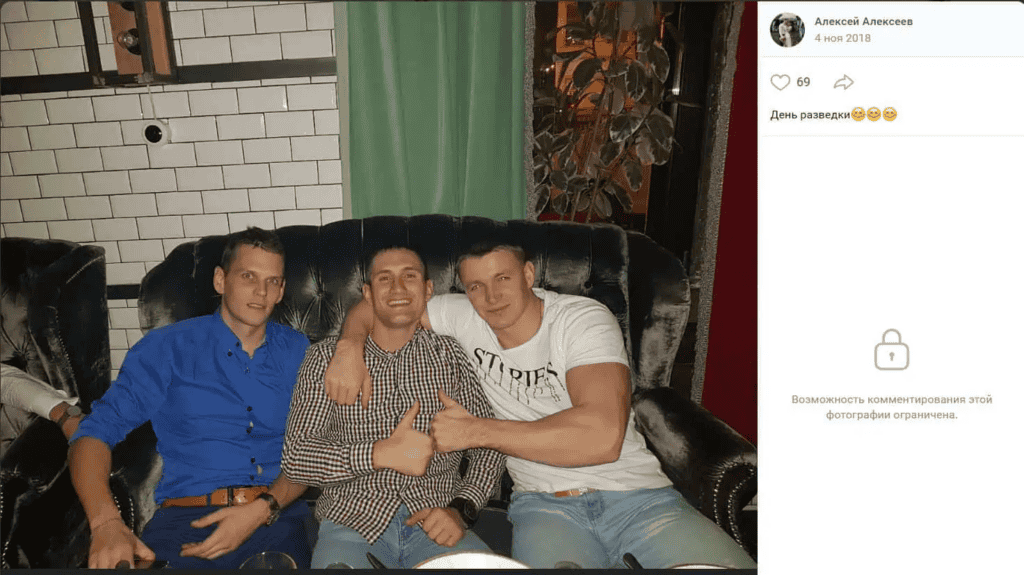
Belikov is in the centre, and his sambo coach friend Alekseev is on the right. Screenshot
This example clearly shows that the further back one goes, the more difficult it is to clean up the digital trail, and facial identification yields impressive results. And just as we tracked down even the secretive Belikov, hundreds of Russian soldiers who committed war crimes on the territory of Ukraine can be found. Even if it takes ten years, they will be identified. And then, it is a matter of justice.